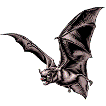Museum, University of Nebraska State

University of Nebraska State Museum: Mammalogy Papers
Document Type
Article
Date of this Version
3-7-1975
Citation
Occasional Papers of the Museum of Texas Tech University (March 7, 1975) number 28: 1-14.
Abstract
Faunal checklists provide useful ready references for many kinds of endeavors, both in the laboratory and in the field , and are particularly helpful to students. Since publication two years ago of our "Checklist of North American mammals north of Mexico" (Jones et al., 1973), demand for that list has exceeded the supply set aside for general distribution; additionally, published systematic studies in the interval necessitate several changes in the list. Principally for these reasons, we here present a revised checklist of mammalian species occurring in the Nearctic to the north of Mexico. As in this and similar earlier compilations, a single vernacular name applies to all populations of a species. There is, however, no formal system of vern acular nomenclature for mammals. Rather, such names gain acceptance through usage and this list attempts to reflect those currently in use.
In this revision, we have attempted to include all species of Recent mammals in North America north of Mexico as recognized at the close of 1974, based on the published literature. As a result, some specific and generic names differ from those used in the previous list, and a few species have been added or deleted. Also, a few vernacular epithets have been changed or corrected, principally on the suggestion of colleagues in the field. Recent systematic studies reflected in the current list include those of Wilson (1973), who regarded Perognathus merriami as a synonym of P. flavus, Lowery (1974), who relegated Microtus ludovicianus to subspecific status under M. ochrogaster, Sutton and Nadler (1974), who elevated three chipmunks to specific status, and the recognition of Macrotus californicus as a species distinct from M. waterhousii by Davis and Baker (1974). Furthermore, Williams et al. (1970) provided reasons for regarding ldionycteris as a genus distinct from Plecotus, and Sokolov's (1973) study suggests return to the use of Lutra as the generic name for North American otters.
Johnson's (1973) recognition of Arborimus as a genus distinct from Phenacomys is not here admitted, principally because it is not clear in his discussion as to which species of these voles he would apply the former name; certainly it applies to P. longicaudus, probably to P. sylvicola, and possibly to P. albipes. Despite Schmidley's (1973) conclusion that Peromyscus comanche should be considered a subspecies of P. truei, a more recent study by Johnson and Packard (1974) seems to confirm its marginal specific status. Our listing of species of Cetacea, as in the first checklist, follows closely that proposed by Rice and Scheffer (1968).
Various species of mammals not native to North America have been introduced onto the continent over the years. We have, in this compilation, listed nine such species (identified by an asterisk) that currently occur in the wild state in numbers sufficient to justify their inclusion. Other species , such as the blackbuck (Antilope cervicapra), axis deer (Cervus axis), sika deer (Cervus nippon), ibex (Capra ibex), and oryx (Oryx gazella) , now occur outside confinement, and some of these likely will be included in subsequent checklists.


Comments
Copyright 1975, Texas Tech University. Used by permission.